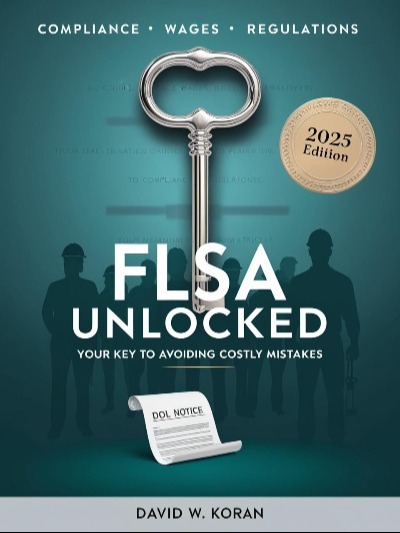Youth Minimum Wage in 2025: Which States Still Allow It?
The "youth minimum wage" refers to the provision under the federal Fair Labor Standards Act (FLSA) that allows employers to pay workers under 20 years of age a minimum wage of $4.25 per hour for their first 90 consecutive calendar days of employment, provided it’s not prohibited by state law. After 90 days or when the employee turns 20 (whichever comes first), the employer must pay at least the federal minimum wage of $7.25 per hour or the applicable state minimum wage, whichever is higher. States can choose to adopt this federal youth minimum wage, set a higher youth minimum wage, or prohibit subminimum wages entirely by requiring all workers to be paid at least the full state minimum wage.
As of March 07, 2025, determining which states "still have the youth minimum wage" depends on whether they allow employers to pay less than the full state minimum wage to workers under 20 during their first 90 days, either by explicitly mirroring the federal FLSA provision or by not overriding it with stricter standards. States with no minimum wage law or a minimum wage below the federal $7.25 default to the federal standard (including the $4.25 youth rate) for FLSA-covered employers, unless they explicitly prohibit subminimum wages. States with higher minimum wages may still permit a youth subminimum wage if they have a specific provision for it, but many have eliminated such distinctions by requiring all workers to receive at least the state minimum wage.
Based on available data and analysis, here’s the breakdown:
States That Still Have the Federal Youth Minimum Wage ($4.25/hour):
These states either have no state minimum wage law (so the federal FLSA applies) or have a state minimum wage equal to or below $7.25 with no explicit prohibition on the youth subminimum wage. Employers covered by the FLSA in these states can pay $4.25/hour to workers under 20 for the first 90 days:
- Alabama: No state minimum wage law; federal FLSA applies ($7.25, with $4.25 youth rate permitted).
- Georgia: State minimum wage is $5.15, but FLSA-covered employers must pay $7.25. The federal youth rate of $4.25 is allowed unless overridden, and no state law prohibits it.
- Idaho: State minimum wage is $7.25; no state law prohibits the federal youth rate.
- Indiana: State minimum wage is $7.25; no prohibition on the federal youth rate.
- Iowa: State minimum wage is $7.25; allows a training wage of $6.35 for the first 90 days for employees under 20 (higher than federal $4.25 but still a youth subminimum).
- Kansas: State minimum wage is $7.25; no prohibition on the federal youth rate.
- Kentucky: State minimum wage is $7.25; no prohibition on the federal youth rate.
- Louisiana: No state minimum wage law; federal FLSA applies ($7.25, with $4.25 youth rate permitted).
- Mississippi: No state minimum wage law; federal FLSA applies ($7.25, with $4.25 youth rate permitted).
- New Hampshire: State minimum wage is $7.25; no prohibition on the federal youth rate.
- North Carolina: State minimum wage is $7.25; no prohibition on the federal youth rate.
- North Dakota: State minimum wage is $7.25; no prohibition on the federal youth rate.
- Oklahoma: State minimum wage is $7.25 (adopts federal rate); no prohibition on the federal youth rate.
- Pennsylvania: State minimum wage is $7.25; no prohibition on the federal youth rate.
- South Carolina: No state minimum wage law; federal FLSA applies ($7.25, with $4.25 youth rate permitted).
- Tennessee: No state minimum wage law; federal FLSA applies ($7.25, with $4.25 youth rate permitted).
- Texas: State minimum wage is $7.25; no prohibition on the federal youth rate.
- Utah: State minimum wage is $7.25; no prohibition on the federal youth rate.
- Wisconsin: State minimum wage is $7.25; no prohibition on the federal youth rate.
- Wyoming: State minimum wage is $5.15, but FLSA-covered employers must pay $7.25. The federal youth rate of $4.25 is allowed unless overridden, and no state law prohibits it.
States with a Specific Youth Subminimum Wage (Above Federal $4.25):
Some states with higher minimum wages allow a youth or training wage below their full state minimum but above the federal $4.25:
- Minnesota: State minimum wage is $11.13 (as of Jan 1, 2025); allows a youth/training wage of $9.08 for the first 90 days for workers under 20.
- Montana: State minimum wage is $10.55 (as of Jan 1, 2025); businesses with gross annual sales of $110,000 or less (not covered by FLSA) can pay $4.00/hour, which applies to youth, but FLSA-covered employers can use the federal $4.25 youth rate.
States That Do Not Allow a Youth Minimum Wage:
Many states with minimum wages higher than $7.25 have eliminated the youth subminimum wage by requiring all workers to be paid at least the full state minimum wage, effectively prohibiting the federal $4.25 rate or any lower rate:
- Alaska: $11.91 (no youth subminimum; all workers get full rate).
- Arizona: $14.70 (no youth subminimum).
- Arkansas: $11.00 (no youth subminimum).
- California: $16.50 (no youth subminimum).
- Colorado: $14.81 (no youth subminimum).
- Connecticut: $16.35 (no youth subminimum).
- Delaware: $15.00 (no youth subminimum).
- Florida: $12.00 (increases to $13 on Sep 30, 2025; no youth subminimum).
- Hawaii: $14.00 (no youth subminimum).
- Illinois: $15.00 (training wage applies regardless of age, not considered youth-specific).
- Maine: $14.65 (no youth subminimum).
- Maryland: $15.00 (no youth subminimum).
- Massachusetts: $15.00 (training wage applies regardless of age, not youth-specific).
- Michigan: $10.56 (increases to $12.48 on Feb 21, 2025; no youth subminimum).
- Missouri: $13.75 (no youth subminimum).
- Nebraska: $13.50 (no youth subminimum).
- Nevada: $12.00 (no youth subminimum).
- New Jersey: $15.13 (training wage applies regardless of age, not youth-specific).
- New Mexico: $12.00 (no youth subminimum).
- New York: $15.50 (outside NYC; no youth subminimum).
- Ohio: $10.70 (applies to employers with annual gross receipts over $372,000; no youth subminimum).
- Oregon: $14.70 (standard rate; varies by region; no youth subminimum).
- Rhode Island: $15.00 (no youth subminimum).
- South Dakota: $11.50 (no youth subminimum).
- Vermont: $14.01 (no youth subminimum).
- Virginia: $12.41 (no youth subminimum).
- Washington: $16.66 (no youth subminimum).
- West Virginia: $8.75 (no youth subminimum).
- District of Columbia: $17.50 (no youth subminimum).
Notes:
- Complexity: Some states have complex rules (e.g., training wages not specific to youth, exemptions for small businesses), making categorization tricky. I’ve focused on whether a subminimum wage for youth under 20 is permitted below the full state minimum.
- Puerto Rico: Minimum wage is $10.50; no specific youth subminimum wage is noted, suggesting the full rate applies.
- Verification: State laws evolve, and local ordinances (e.g., in cities like Minneapolis or Seattle) may further restrict subminimum wages. For the most current and precise information, check each state’s labor department website.

